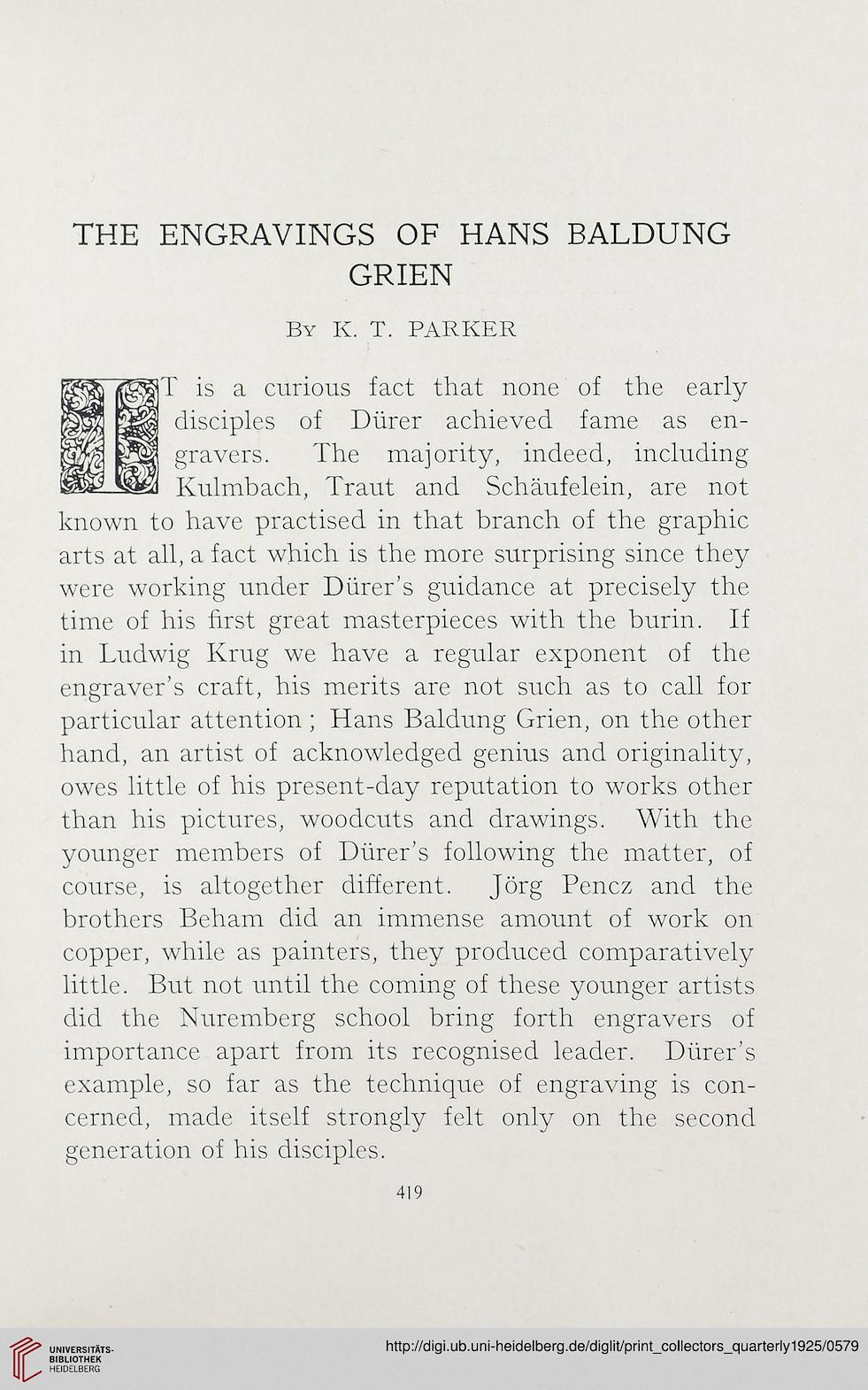THE ENGRAVINGS OF HANS BALDUNG
GRIEN
By K. T. PARKER
T is a curious fact that none of the early
disciples of Diirer achieved fame as en-
gravers. The majority, indeed, including
Kulmbach, Traut and Schaufelein, are not
known to have practised in that branch of the graphic
arts at all, a fact which is the more surprising since they
were working under Diirer’s guidance at precisely the
time of his first great masterpieces with the burin. If
in Ludwig Krug we have a regular exponent of the
engraver’s craft, his merits are not such as to call for
particular attention ; Hans Baldung Grien, on the other
hand, an artist of acknowledged genius and originality,
owes little of his present-day reputation to works other
than his pictures, woodcuts and drawings. With the
younger members of Diirer’s following the matter, of
course, is altogether different. Jorg Pencz and the
brothers Beham did an immense amount of work on
copper, while as painters, they produced comparatively
little. But not until the coming of these younger artists
did the Nuremberg school bring forth engravers of
importance apart from its recognised leader. Diirer’s
example, so far as the technique of engraving is con-
cerned, made itself strongly felt only on the second
generation of his disciples.
419
GRIEN
By K. T. PARKER
T is a curious fact that none of the early
disciples of Diirer achieved fame as en-
gravers. The majority, indeed, including
Kulmbach, Traut and Schaufelein, are not
known to have practised in that branch of the graphic
arts at all, a fact which is the more surprising since they
were working under Diirer’s guidance at precisely the
time of his first great masterpieces with the burin. If
in Ludwig Krug we have a regular exponent of the
engraver’s craft, his merits are not such as to call for
particular attention ; Hans Baldung Grien, on the other
hand, an artist of acknowledged genius and originality,
owes little of his present-day reputation to works other
than his pictures, woodcuts and drawings. With the
younger members of Diirer’s following the matter, of
course, is altogether different. Jorg Pencz and the
brothers Beham did an immense amount of work on
copper, while as painters, they produced comparatively
little. But not until the coming of these younger artists
did the Nuremberg school bring forth engravers of
importance apart from its recognised leader. Diirer’s
example, so far as the technique of engraving is con-
cerned, made itself strongly felt only on the second
generation of his disciples.
419




